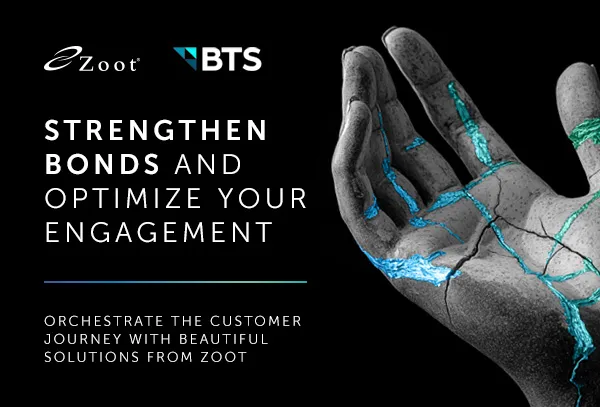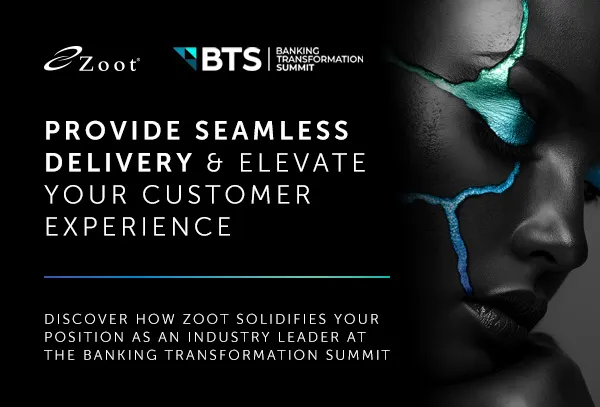
The two-day conference was packed full of valuable programming including 25 roundtables, over 100 speakers, and a multitude of opportunities to network and dive deep into advancements across the banking industry. With content tracks focused on digital transformation and the world of AI, data, and automation, there was plenty to learn and discuss.
Pursuing a Customer-Centric Future in Banking
Enhancing the customer experience is a topic that took center stage at Banking Transformation Summit. Customer expectations have undergone a significant shift in recent years, with customers demanding more intuitive and personalized interactions from their financial institutions.
Banks are stepping up by prioritizing customer-centric strategies that deliver cohesive experiences across both physical and digital touchpoints – what’s often called “phygital” banking. This approach emphasizes blending the best aspects of in-person service with the convenience of digital channels to meet customers wherever they are.
At the same time, hyper-personalization at scale has continued to solidify itself as a key expectation, requiring banks to harness vast amounts of data to tailor experiences to individual needs. However, delivering on this promise presents challenges including data integration, privacy concerns, and, of course, scalability.
To keep up, banks must focus on integrating their channels, leveraging customer insights effectively, and investing in technology that ensures both personalization and consistency in every interaction.
Leveraging AI for Scalable, Reliable Transformation
Meeting customer expectations at scale requires not just innovation but efficiency, and that’s where AI comes in. A major area of conversation at Banking Transformation Summit, banks are leaning into AI-driven tools to provide consistency in training, enhanced customer service interactions, and improved decision-making.
While it is generally accepted that AI processes will be fully adopted over the next five to ten years, most banks are progressing cautiously. Generative AI remains a challenge due to potential inaccuracies. On the other hand, machine learning and other AI applications are quickly gaining traction, which was a key focus at Banking Transformation Summit.
Banks have seen major increases in operational efficiency by adopting AI-driven tools, enabling them to leverage AI in a manner that is controllable, documented, and demonstrates clear business value with the transparency and reliability they need.
Unlocking Growth with Clean Data
Clean data is a cornerstone of effective AI implementation, though its importance extends far beyond AI alone. Clean, structured data is essential for driving personalization, as it enables banks to understand and anticipate customer needs so that they can deliver tailored experiences. It also plays a critical role in trust, ensuring accuracy and transparency in customer interactions.
Efficiency gains are in play as well, as banks can streamline processes while obtaining reliable insights for decision-making and strategic direction. Data governance is increasingly important to strategies focused on trust and compliance. By establishing and automating clear policies and controls, banks demonstrate accountability while fostering customer confidence.
As data needs expand and volumes continue to grow, establishing a data orchestration layer across systems is essential for delivering hyper-personalized customer experiences and positioning banks of all sizes for sustainable growth.
Staying Competitive in the Era of Open Banking
Banks are continuing to move forward in preparation for open banking, readying their technology and teams for the upcoming regulatory changes. The consensus across the industry is clear: regardless of administrations or regulatory delays, open banking will be adopted in the U.S. sooner rather than later.
Forward-thinking organizations are already positioning themselves as leaders by investing in the technology, resources, and expertise needed to navigate the new regulatory landscape. They are making strides in ensuring they have the right systems in place to meet these challenges head-on, and to take the opportunity to achieve growth.
However, those who are delaying action are quickly falling behind as the market evolves. With competition pushing forward, latecomers will struggle to catch up. Trying to implement changes to your technology infrastructure once open banking is in place could mean scrambling to comply, missing out on key advantages and losing ground to more agile competitors.
With APIs driving 80% of transactions, the need for seamless integration between systems and services has never been greater. Banks must focus on building robust, scalable APIs that connect disparate systems efficiently and securely. Investing in a flexible, future-proof infrastructure layer will ensure smooth data exchange, compliance with new regulations, and more customer-centric services.
Shaping Your Team and Culture for Innovation
With open banking on the horizon, banks are moving rapidly from traditional, legacy mindsets to fintech-inspired agility, a shift that is necessary for driving innovation and adapting to meet evolving demands. This shift requires not only embracing new technologies but also shaping a culture around a clearly articulated vision. Without it, organizations risk misalignment and inefficiency. Having the right team in your corner – whether in-house or through trusted partnerships – is crucial for growth in a competitive market.
Vendors also play a pivotal role in this transformation. Banks are seeking flexibility in the solutions they adopt, seeking vendors who offer agile systems that allow them to pivot quickly as business needs evolve. Vendors must showcase clear roadmaps and innovation that tie directly to the bank’s initiatives and instill confidence in supporting long-term strategic objectives, or risk being replaced.
Unifying Your Tech Ecosystem for a Competitive Advantage
A fractured tech ecosystem of legacy solutions, on-prem tech, and point solutions makes it increasingly difficult for banks and other financial institutions to deliver cohesive experiences and power the growth they want.
This fragmentation results in inefficiencies where processes are duplicated, systems are not optimized, and valuable insights remain locked in disparate platforms. As banks struggle to integrate and harmonize these systems, competition pulls ahead and their ability to scale and adapt is compromised. To overcome these challenges, banks need the right partner – one who understands the complexities of their tech landscape and can guide them toward a unified ecosystem.
When a major bank’s disjointed systems resulted in difficulty managing card usage and credit limits over time, Zoot implemented processes that allow for frequent automated reviews of usage and credit standing data. This enabled the bank to proactively respond when a customer’s credit improved and led to a massive jump in retention, and it’s just one way our solutions will drive business outcomes at your organization.
Solve the gaps in your workflows and set your bank on a path toward growth and innovation. Ready to get started? Get in touch with our team.






